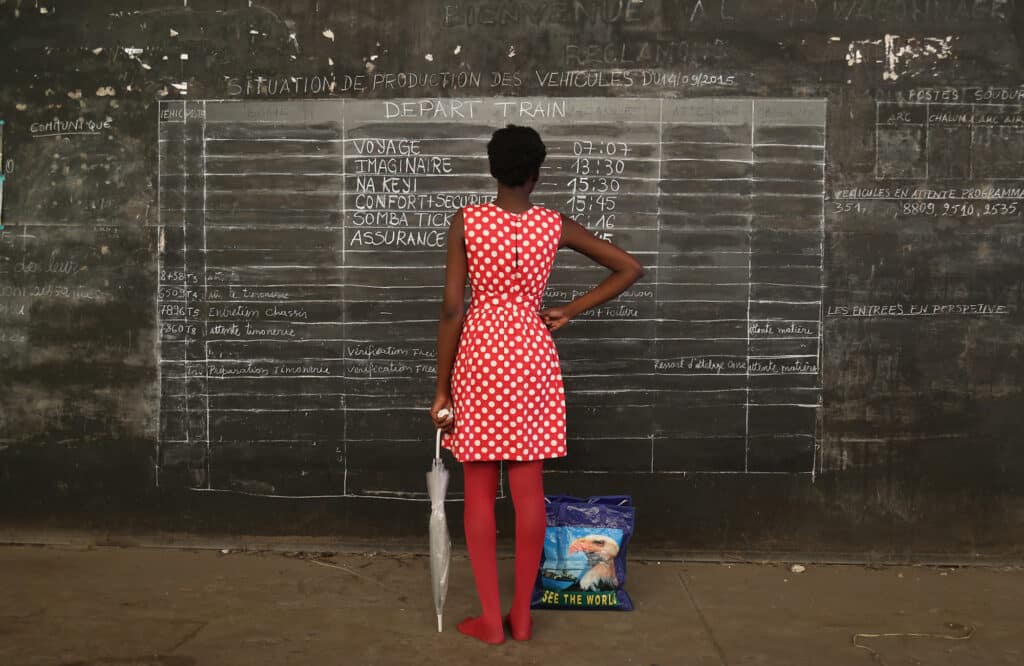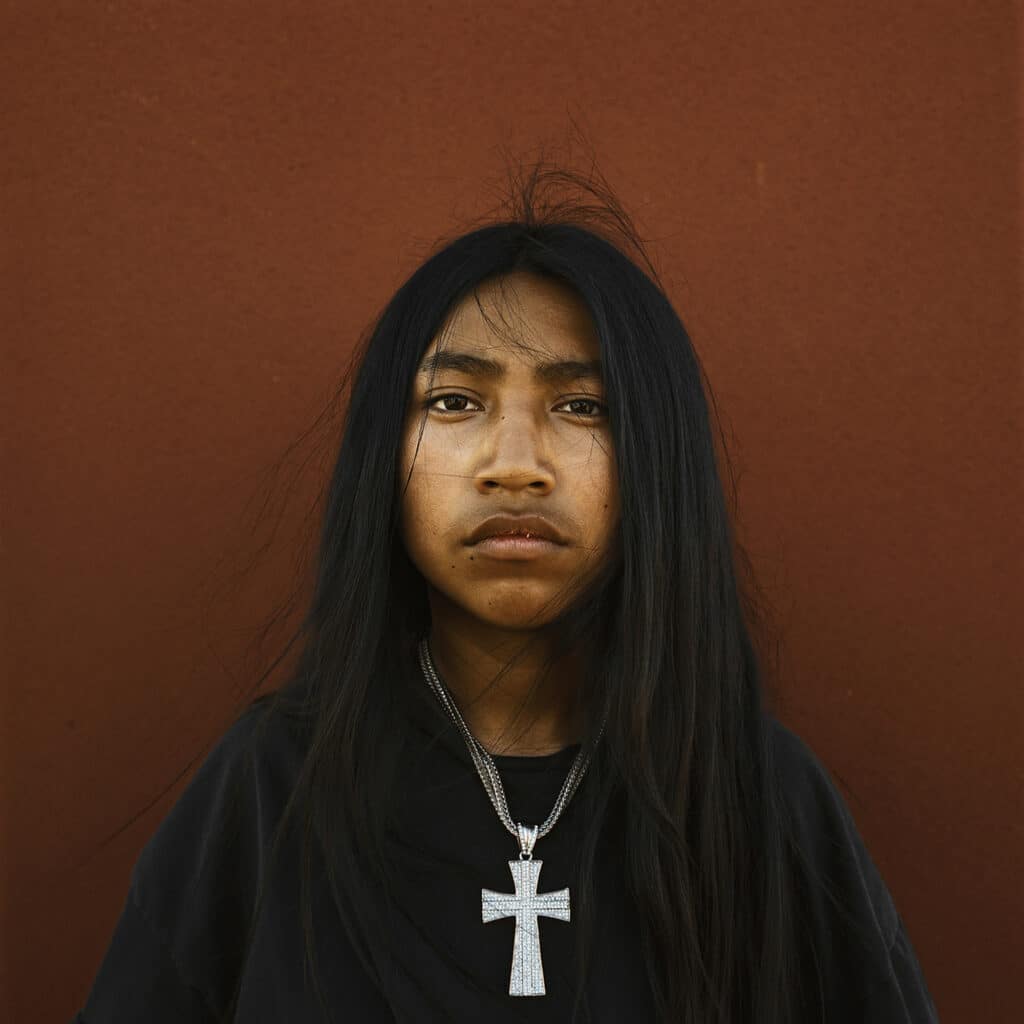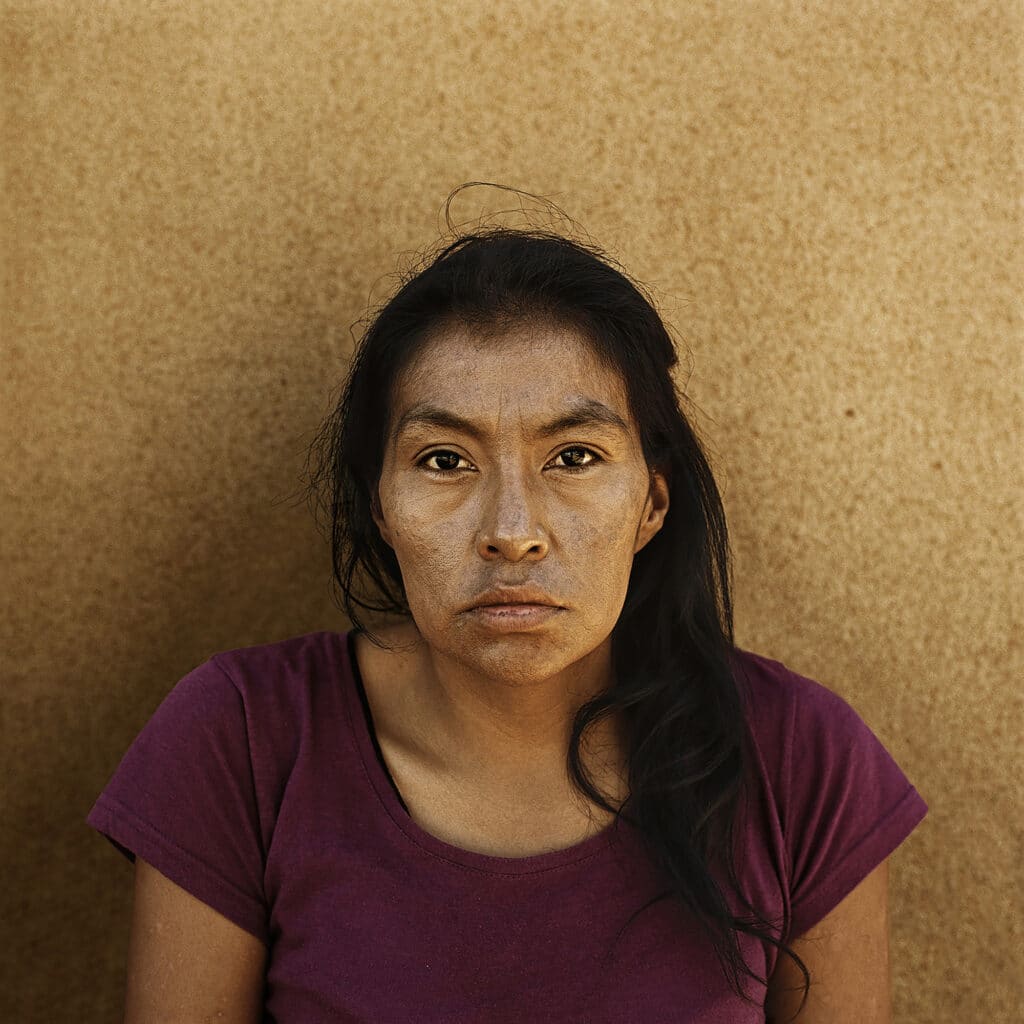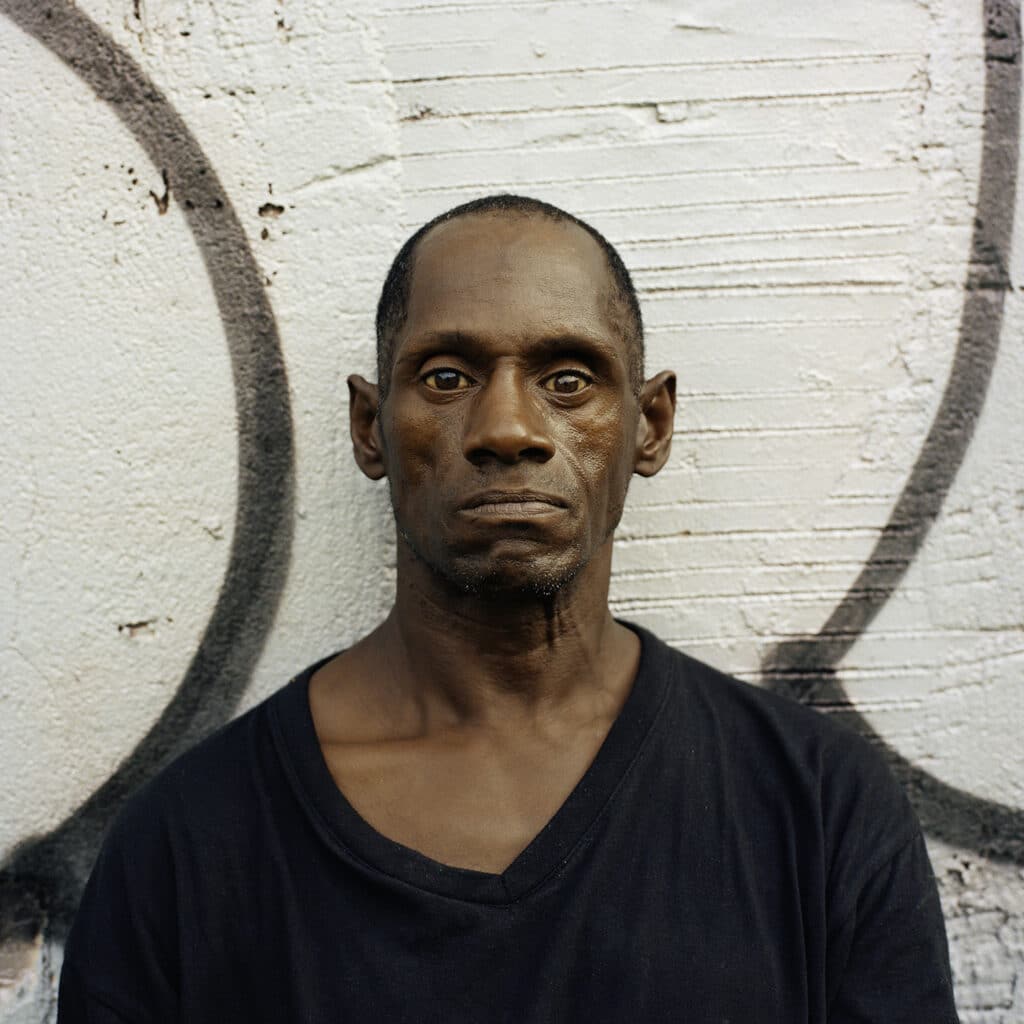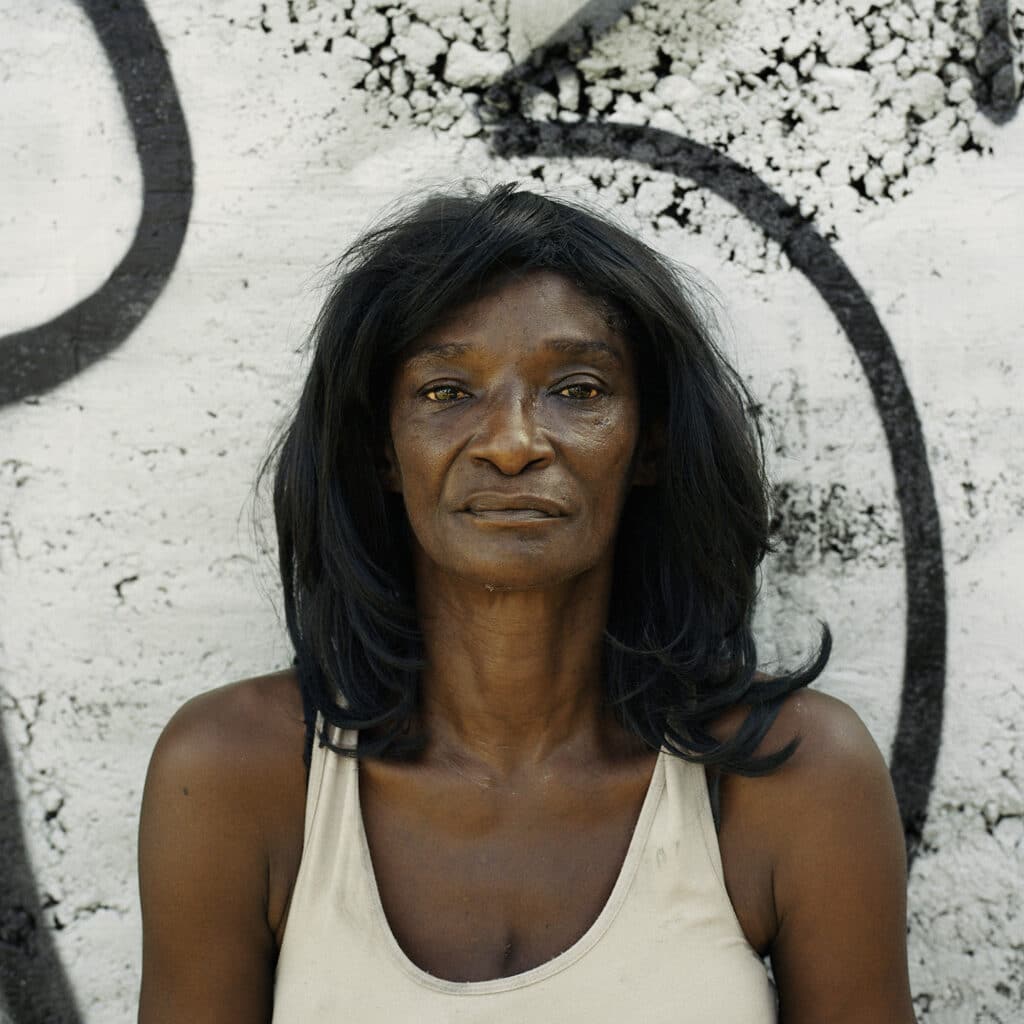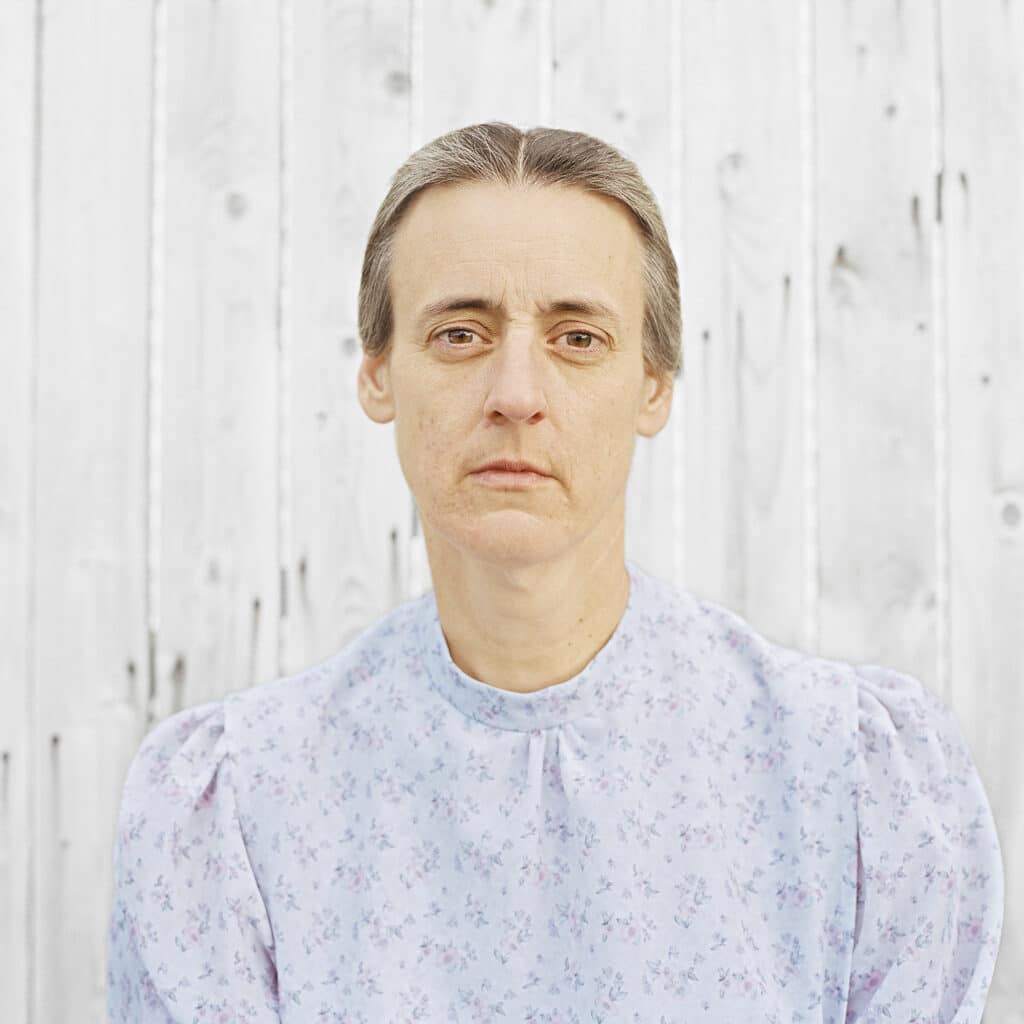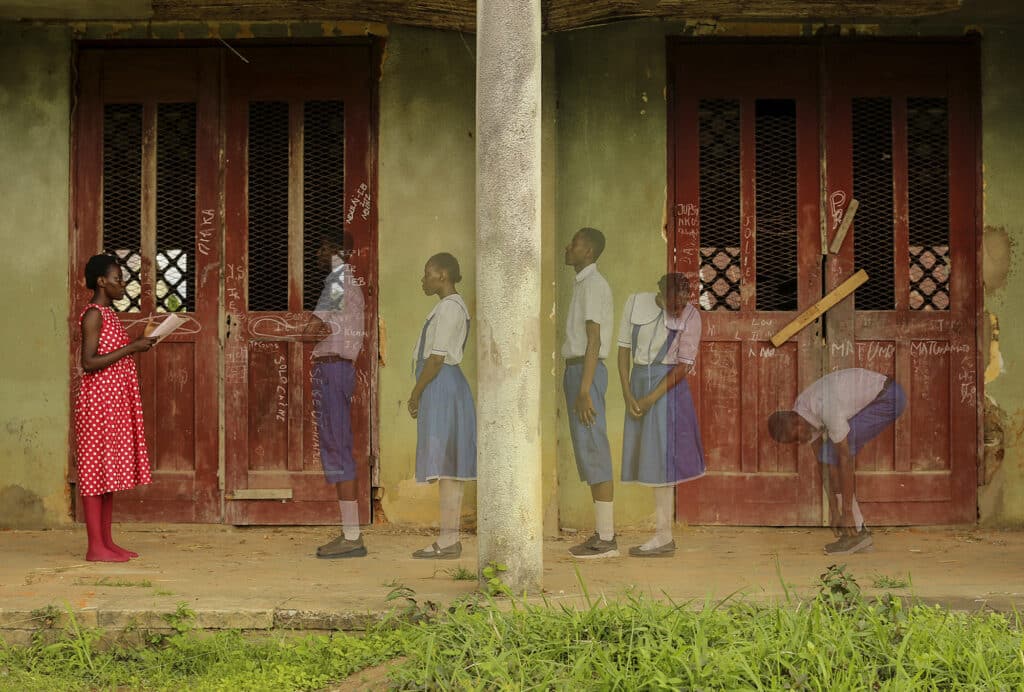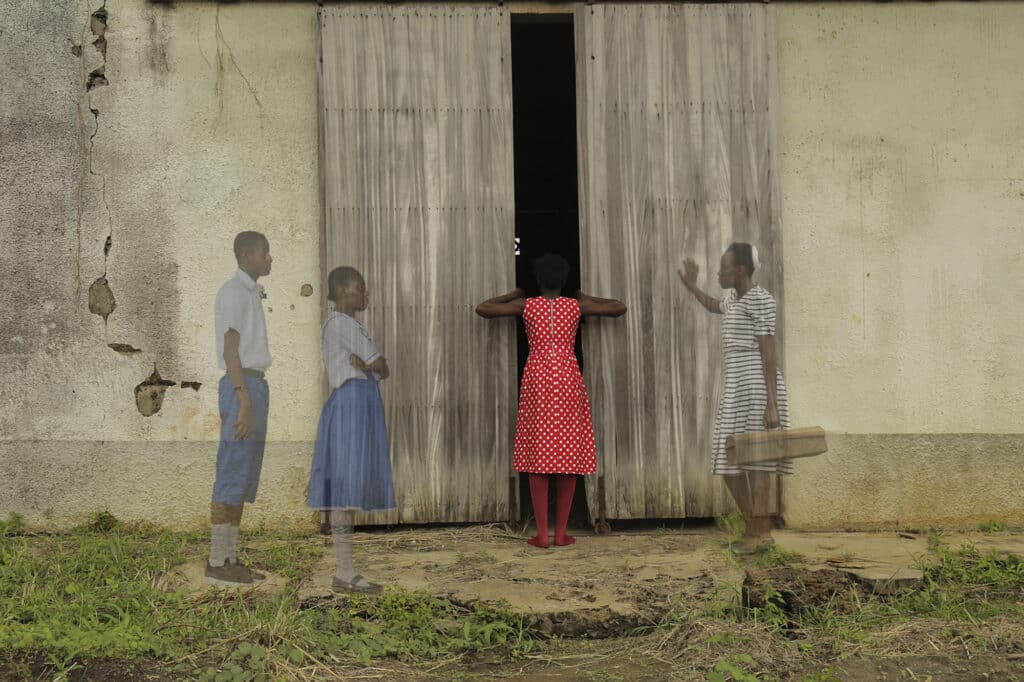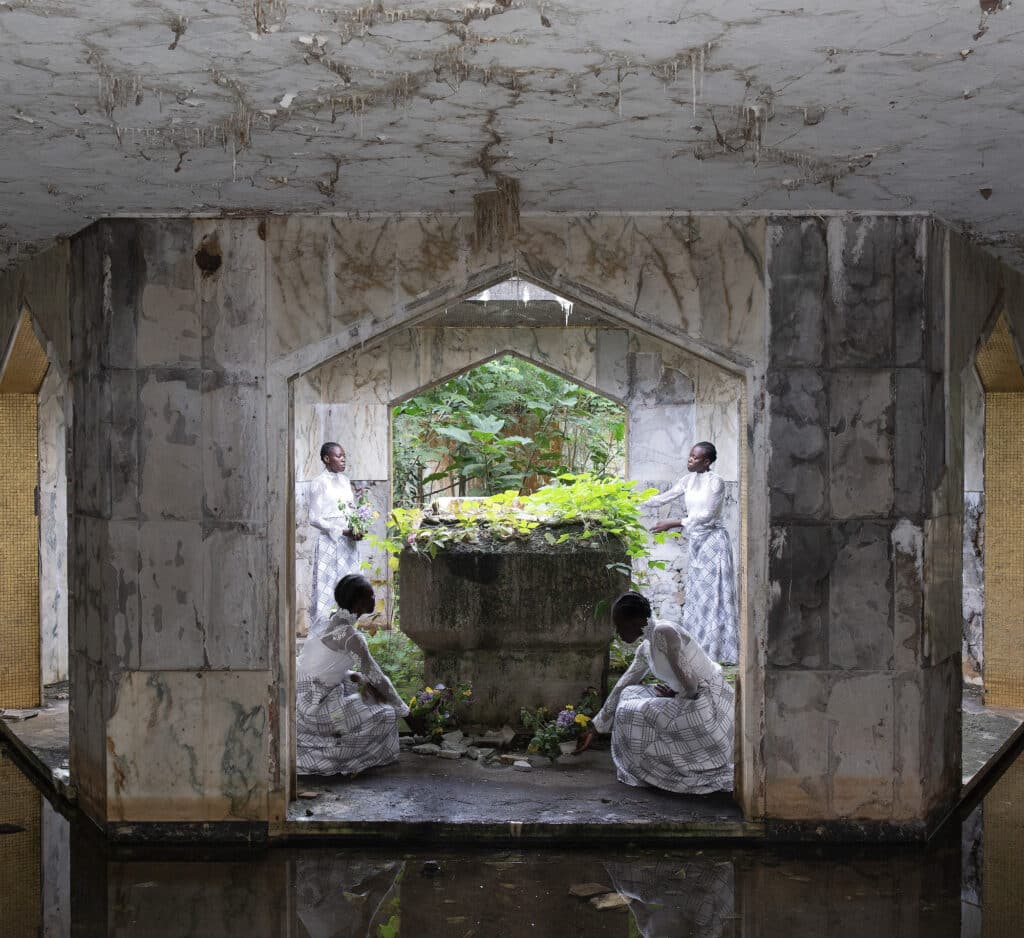How do you tell the story of a country or a people? How, using images, do you highlight the faces of those who have been forgotten or recover a missing chapter of the shared past? The Château d’Eau Gallery in Toulouse, the oldest French public institution exclusively dedicated to photography, presents two approaches that represent fundamentally different aesthetics and subject matter, but engaged in a common quest: that of understanding where we come from and bearing witness to collective and personal history through image and the gaze.
Photographer Marion Gronier went to meet the descendants of the first peoples of the United States of America, while Gosette Lubondo has continued her work on the history of her country, the Democratic Republic of Congo.
U.S. history: straight into your eyes
“I am fascinated by the human face; I think it makes things more complex, it unfolds,” said Marion Gronier, whose work centers on the portrait. Her project We Were Never Meant to Survive took five years.
From 2013 to 2018, she made several trips to the United States to meet the communities that have shaped the history of the land: the Native Americans of Arizona, New Mexico, and Montana; the African Americans of New Orleans; and Pennsylvania Mennonites. Through the faces of their descendants, Marion Gronier foregrounds the peoples who are the roots of the United States, and reminds us of the discrimination that they still experience.
Gronier spent several weeks with each community. “I would stop people in the street, it was the faces that moved me,” she said. A few simple words were enough to start a conversation. Passersby sat in her makeshift studio—a plain plastic bucket the photographer carried around.
Her instructions were simple: don’t smile and look at the camera. The portraits are frontal, in square format, taken against a solid background; the direct gaze of the sitter seems to challenge the viewer. Sometimes, the photographer is reflected in the subject’s eye. Every face seems to evoke the heritage of the community, long excluded from history, banished from the golden book of the American dream.
“This project questions the very nature of the photographic portrait,” adds Christian Caujolle, artistic advisor at the Château d’Eau. Through the use of extreme close-up, Gronier evokes the modus operandi of descriptive, anthropological portraits applied to colonized populations, in particular among Native American and African American communities. This process implies a close framing of the face, a neutral expression, and a description of the sitter’s physical characteristics.
“I realized that the radical nature of this approach, the intensity of the portraits, was a direct reference to the history of colonization and anthropological portraiture which inventoried populations with all the violence the term implies,” explained the photographer. In her work, the opposite occurs, as if it were a revenge against history, an act of resistance.
In the series, the Mennonites, an Anabaptist religious community that shut away from the modern world, have a special status. “They represent, on the one hand, the white settler, who justified the violence of land appropriation and the subjugation of other human beings by the logic of God-ordained civilizing mission, and, on the other hand, a community persecuted for its dissent from a religious orthodoxy and its resistance to hegemonic modernity,” writes Gronier.
We find in her portraits the influence of Gordon Parks, Dorothea Lange, as well as of the ethnologist photographer Edward Sheriff Curtis and his portraits of Native Americans.
Time traveling across the DRC
In the second half of this twofold exhibition, the gallery showcases three series by Gosette Lubondo, a young talented explorer of bygone vibes. Using a unique style, she reenacts the history of her native country, the Democratic Republic of Congo.
In 2016, the photographer took over an abandoned railway car at the train station in the Congolese capital of Kinshasa, where she lives and works. Collating multiple shots, she conjures up ghostly seats, evoking the life on the railroad. The transparent nature of the images, of the ghosts from the past in the Imaginary Trip, “is a way for me,” Lubondon explained, unhesitatingly stepping in front of the camera to tell the story, “to show the passage of time, to evoke people who have frequented the place. It also allows me to create dreamlike images. These photographs evoke the history of the railroads in the Congo and in Africa. This history intersects the daily lives of the inhabitants.”
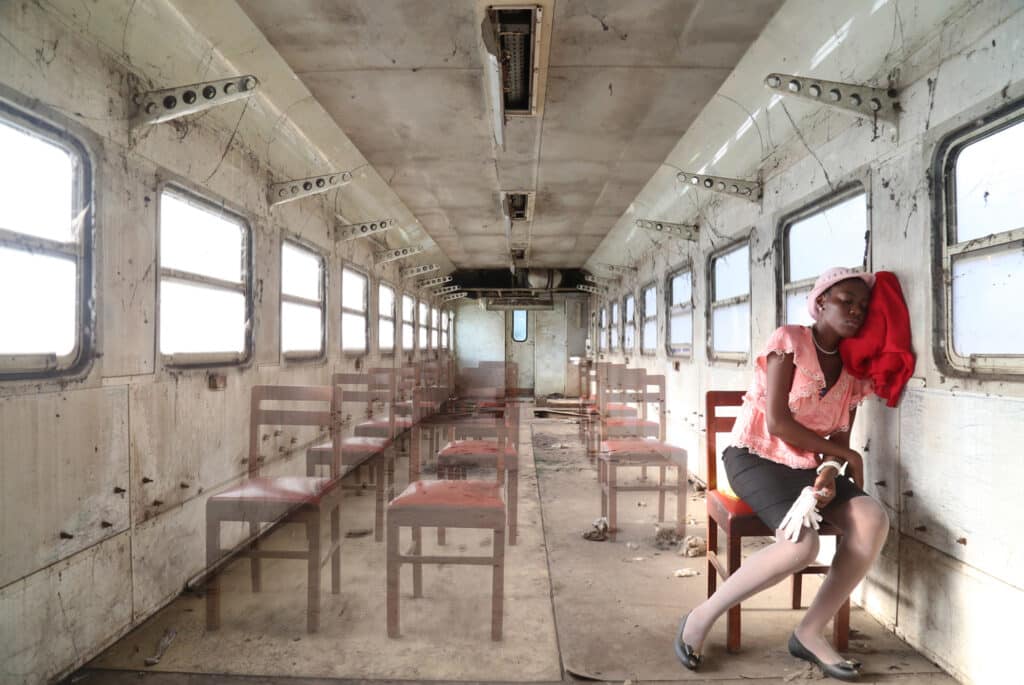
This idea gave rise to a concept of journeying into collective and individual memory. In Imaginary Trip II, Lubondo visits a school built in 1936 by Christian missionaries and abandoned in the 1970s. Here she becomes the teacher to students in uniforms—phantoms returning to inhabit the place. “My parents dreamed of going to this school. They talked to me about it every time we walked by,” recalled the photographer.
Lubondo met some of the school’s first graduates. She also discovered that classes were still being taught at the school, part of which had been overgrown with vegetation. “I wanted to know more about the site. I was immediately fascinated by it. It was very interesting to work on the passage of time through my photos while showing a certain continuity.”
Her latest series Terre de lait, terre de miel [Land of Milk, Land of Honey] continues this work on memory. The title is inspired by the book of Leviticus: “I will give [the land] unto you to possess it, a land that floweth with milk and honey.” Lubondo examines here the controversial regime of President Mobutu, head of the Democratic Republic of Congo from 1965 to 1997.
She took over a particular site, witness to the former glory of the political leader. The town of Gbadolite, in northern DRC, was home to the “Versailles of the Jungle,” an opulent marble palace decorated with enormous chandeliers, now overrun by creeping vines and wild grass. “This architecture, in the middle of an equatorial forest, is really striking, you feel an overwhelming, symbolic presence. You feel that is still vivid in the imagination of people, that it is still feared,” Lubondo observed.
Wearing clothes with mourning motifs, she took staged self-portraits amid these ruins of history, of her own history. “What we see is not only images of ruins; poetry also emerges, which tells us that there is also a possibility of dreaming. What’s beyond reality is not always a rosy picture. The childhood curiosity has never left her, and Lubondo applies her inquisitive, intelligent, and creative eye to the memory of her people. Her project is fueled by the desire “to propose a new imagery of the Congo and of Africa, an imagery that is not found in history books.”
Gosette Lubondo, Marion Gronier, represent two, apparently contrary, ways of looking, which nevertheless head in the same direction: they both use images to testify to the questions of history, to the collective and individual heritage of the past.
Gosette Lubondo et Marion Gronier at the Château d’Eau in Toulouse, until December 31, 2022.
